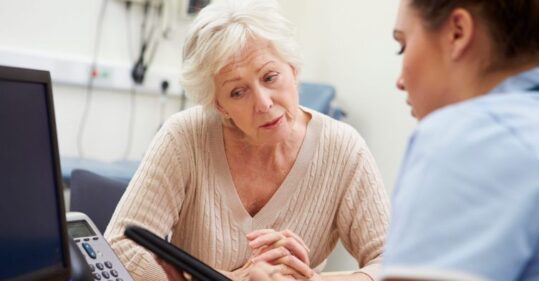NHS England pushes for more F2F general practice appointments in £250m package

NHS England has announced winter funding of £250m for general practice to ‘increase the proportion of appointments delivered face to face’.
It said the Winter Access Fund also aims to increase overall appointment volumes in general practice. Commissioners have also been told to immediately begin to identify the 20% of practices in their area performing the worst in terms of delivering face-to-face appointments, as part of the package.
But the British Medical Association (BMA) has said the plan is ‘flawed and patient care will suffer as a result’, with committee chair Dr Richard Vautrey adding his disappointment that there it ‘no end in sight to the preoccupation with face-to-face appointments’.
Related Article: Nurses must be ‘recognised and rewarded’ to say in profession, says Streeting
And nurses have stressed that they have been delivering face-to-face appointments throughout the pandemic. Although they welcomed the funding boost, they told Nursing in Practice more investment is needed to improve patient access.
QNI chief executive Dr Crystal Oldman said practice nurses have ‘worked tirelessly to ensure people receive the care they need’, whether in-person or remotely.
‘There are already many efforts nationally to support primary care to increase capacity and the availability of appointments, including the development of a skilled registered nursing workforce in general practice to meet increasing demand,’ she added.
Robana Hussin-Mills, a GPN and deputy clinical director at Nottingham City East PCN, said the £250m boost is ‘welcome’, but ‘needs to be seen in the context’ of increased pressure on primary care.
She said: ‘There is no short-term fix to the workforce in primary care. It needs proper investment and time to work through the challenges on the frontline. We also need to reassure patients that one model does not fit all.’
Practice nurses ‘have been delivering face-to-face appointments and care alongside primary care colleagues throughout the pandemic,’ she also pointed out. ‘If the patients want to be seen, we will see them. This has never changed.’
Related Article: Investigations into whistleblowing at NMC delayed and recommissioned
Naomi Berry, a practice nurse based in Bradford, said: ‘They want to increase appointments but there is not enough space to do so in general practice. Our doctors have been doing telephone reviews but have been seeing people face to face, which is always an option for patients.’
The plan also said:
- the NHS will increase its oversight of practices with the most acute issues in relation to access, with GP appointment data to be published at practice level by spring next year as opposed to CCG level, as it currently is.
- patients will get the opportunity to rate their practice’s performance, via text message, based on their most recent experience of accessing support
- There will be a focus on ‘increasing capacity to boost urgent same-day care’
- The NHS will support ‘upgrades to telephone systems’
- The Government will ‘reduce administrative burdens on GPs’ by reforming FIT notes and DVLA checks and who can provide them.
- There will be practical steps on infection control measures in GP settings, as trailed yesterday
- The NHS, the Government and Academy of Medical Royal Colleges will develop a zero-tolerance campaign on abuse of NHS staff, including GP teams.
In addition, it reaffirmed its support for PCNs to ‘make the best use’ of nursing associates, as part of the additional roles reimbursement scheme (ARRS), which provides funding for 26,000 additional roles by the end of 2023/24.
Announcing the plan, health and social care secretary Sajid Javid said he was ‘determined to ensure patients can see their GP in the way they want, no matter where they live’.
Related Article: One in five appointments in general practice completed by a nurse
He continued: ‘Our new plan provides general practice teams with investment and targeted support. This will tackle underperformance, taking pressure off staff so they can spend more time with patients and increase the number of face-to-face appointments.’
A version of this story was originally published by Nursing in Practice sister publication Pulse.

See how our symptom tool can help you make better sense of patient presentations
Click here to search a symptom




